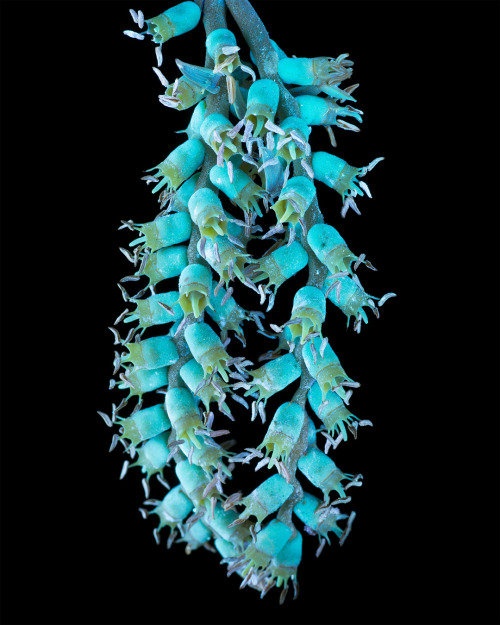While thinking of a tropical island might conjure images of tall palms arcing over a beachfront loun
While thinking of a tropical island might conjure images of tall palms arcing over a beachfront lounge spot, you won’t find Pritchardia martii hanging around there. Endemic to the island of Oahu, P. martii grows wild starting around 1,000ft and up to around 2,600ft in environments ranging from fairly dry to quite wet. Plants in the genus Pritchardia are known in the Hawaiian vernacular as Loulu and the fruit as Hawane which is sometimes applied to the plant itself. These plants were used to make spears (the trunk), as thatching and weaving material (leaves), and as food (the fruit) for which notches were carved into the trunks to assist in climbing leaving some older specimens still bearing these marks. The pendant inflorescences have an odor reminiscent to me of overripe stone fruit and readily gather small insects such as gnats. The cup-shaped flowers gleam with nectar and may attract rats which threaten the plants in the wild by eating not only the flowers, but the fruit when ripe. This threat is once again a manifestation of human inhabitation of the island as more than one species was introduced, starting as far back as 1,600 years. While the issue is addressed in cultivation by attaching wire cages around the fruit, the approach is not feasible in the wild which may make long term efforts toward conservation challenging. This subject was collected and photographed on the premises of Lyon Aboretum while I was on assignment for Hana Hou! -- source link
#pritchardia#martii#species#hawaii#endemic#hawaiian#arboretum#conservation#nature#photography

